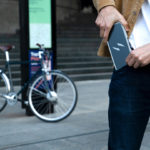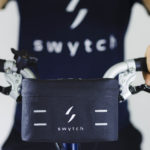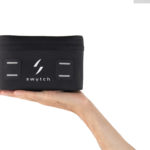Doesn't everybody expect the same thing when they buy a new bike, their bike just works?As I said, you can buy an OEM MiRider bike and others that have KT controllers.
What's the difference?
Doesn't everybody expect the same thing when they buy a new bike, their bike just works?As I said, you can buy an OEM MiRider bike and others that have KT controllers.
That's what I said. It's you that seems to be confused about having to do settings or something.Doesn't everybody expect the same thing when they buy a new bike, their bike just works?
What's the difference?
You implied in that post that if the bike does not have a KT controller, the same expectation won't be realised.When you buy a KT controller with throttle, speed sensor, PAS, brakes and LCD everything works straight out of the box, but people try to save money by using their original stuff when they replace their burnt out LiShui OEM one. That's when you have to figure out settings and wiring sequences. As I said, you can buy an OEM MiRider bike and others that have KT controllers. You just switch them on and they work. No OEM manufacturer expects customers to do settings before they can ride their bike.
yes, I could but I don´t like badmouth the competitors because it´s not my style.Mechaniker can defend Lishui products much better than I can
A three pin connector on the motor means that it's sensorless and you need a sensorless controller. I don't quite understand what you're saying. The important thing is how many wires are in the motor cable attached to the motor. You said originally that it was a 9-pin cconnector. Is that right? All cables with 9 pin connectors have 8 or 9 wires in them, not 3.Hi All.
The controller (KT) has arrived and I have started fitting. The plug to the motor was too stiff to fit onto the old motor plug. So I decided to remove the new 9 pin connector and fit the old one to the connector. But i found that the 9 pin connector has 9 wires. Not very surprising i suppose. However the old connector has only three wires! Any suggestions guys?
Yes, that sounds good. Occasionally, there isn't a speed sensor in the motor, so the white wire isn't connected, in which case you need to fit a wheel magnet type sensor. On some rare occasions, the wire sequence in the connector is not correct, where the wires don't go colour to colour, in which case you have to find the correct sequence by testing different combinations until you find one of the three out of 36 combinations that works.I checked carefully and you are correct! I was using my somewhat unreliable memory. From the motor connector I have three thicker wires, green, yellow and blue. Also six thinner wires, red, yellow green, blue, black and white. All the wires connect into the controller except the white wire. I had look inside the new controller and all wires connect into the printed circuit board, including the white one. So would you say I am good to go please? Thank you for your very fast response.
You can get special 3-wire ebike ones that are relatively expensive unless you buy them with the controller from a Chinese supplier, or you can cut a typical two wire reed switch type off an ordinary cheap cycle computer. They all work.Thanks again. If I need a speed sensor, would this be a reed relay and magnet on the wheel, or does it need to be synchronized? As to the combinations, what fun!
It depends on the controller, but I can give you a rule. Measure the voltage on the white wire coming out of the controller when it's switched on. if the white wire is 5v, the second wire goes to ground, and if it's zero volts, the other wire goes to 5v.Hi @saneagle ,
Can you clarify something for me concerning the absence of a speed sensor in the motor and using something else to generate a speed signal for the controller (on the white wire).
Taking a reed switch as an example, obviously one connection of the switch goes to the white wire but what about the 2nd connection - does is go to ground/0v or +5v or something else?
And the 3-wire ebike type you mention above - what is the connection arrangement for those please?
Cheers, AlanM
A throttle is a very simple hall sensor powered by 5v. On it's own, the signal wire would give a fixed 3v. There are two magnets that rotate with the lever - one N facing, the other S facing. When the S facing one is very close to the hall, the voltage on the signal wire goes down to 1.2v, and when the N-facing one is against it, the voltage is 3.8v. Between those two positions, the voltage is proportional. The controller reads the voltage and divides it up to give from zero to max speed. Obviously, the spring is needed to hold the S facing magnet against the hall at rest. If the magnet falls out or the stop breaks, there is nothing to pull the signal down, so the bike won't stop unless you have brake cut-offs.Yes it is much appreciated saneagle. I have received a new controller to replace the one that is failing and as you warned me, the wire colour, connections etc may be wrong. So I decided to start testing with the throttle and ignore the pas initially. So I have a choice of the old throttle or the new one that came with new controller. By the way, the throttle is legal on my truly ancient bike. The existing setup is throttle wiring rd wht blk going to the controller rd grn blk. The new setup is new throttle wiring rd blk grn going the the new controller rd blk white. All very confusing for me. However, am i correct in thinking that the throttle is just a resistive potentiometer and so i can use a multimeter to sort out the connections? Also, as you mentioned, I should find 0 volts and 5 volts on the controller with the third connection to the slider on the potentiometer?




